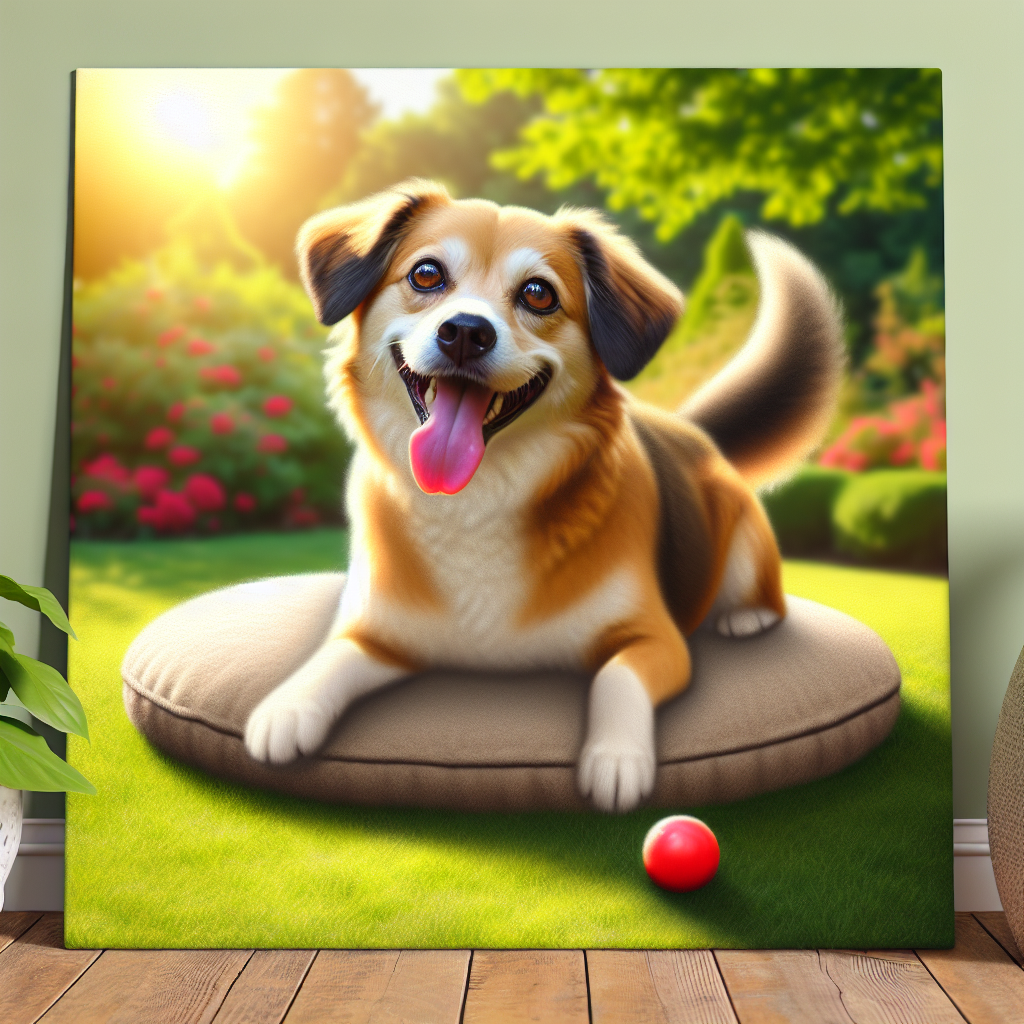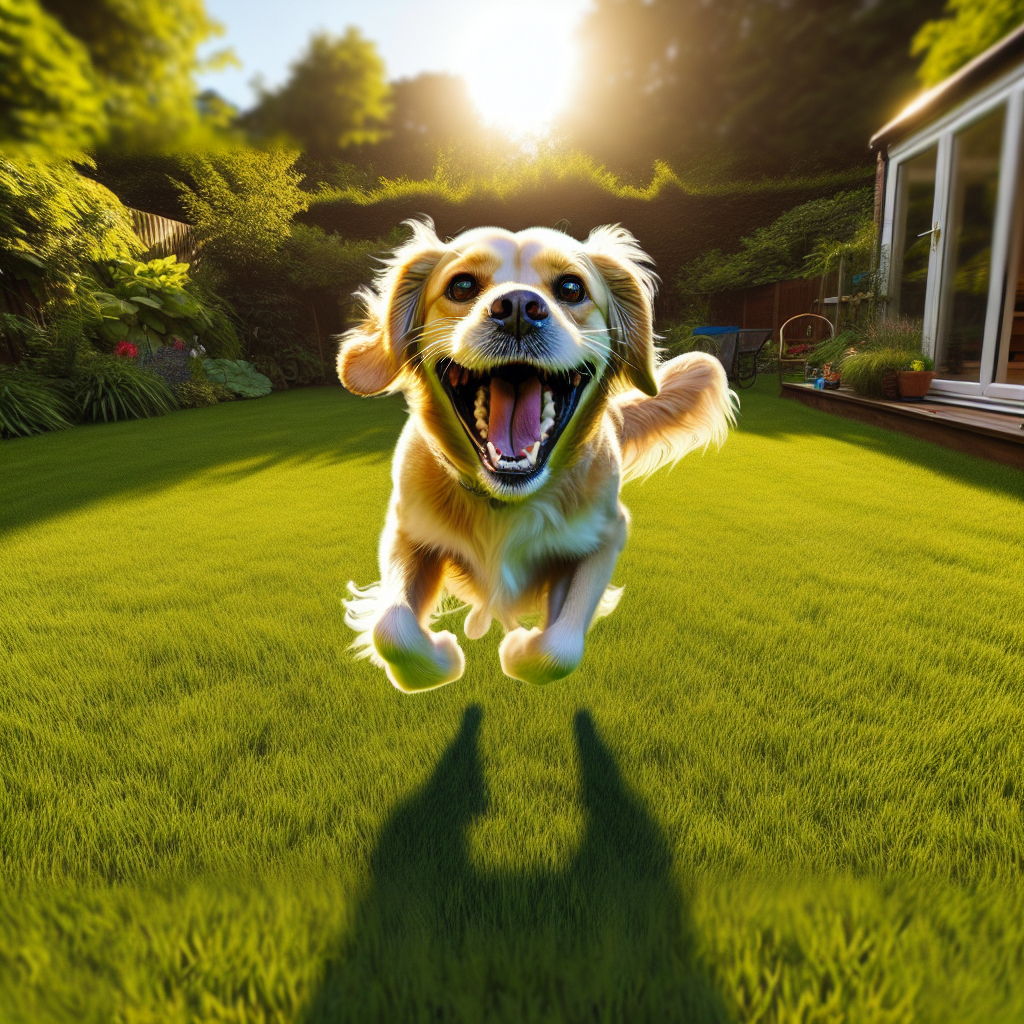The Flea Frenzy: What You’re Up Against

Alright, folks, let’s dive into the world of fleas. You might think these tiny creatures are just a problem for your pets. But no, they’re more like uninvited guests who love to crash your humble abode. A flea infestation in homes can turn your life upside down faster than you can say “itchy nightmare.” These little buggers are sneaky. They multiply like rabbits but without the cuteness. If you’re wondering what you’re up against—think of a pest that’s got the persistence of an unpaid bill.
Fleas in the house don’t just show up on your pets. Imagine sitting on your couch, and suddenly, whoosh, a tiny vampire jumps on you. Gross, right? That’s the reality of fleas without pets—they still find a way in. They’re like that one friend who always knows how to crash a party. And once they’re in, they’re not leaving without a fight.
Not Just for Pets: How Fleas Crash Your Home
You might be scratching your head, wondering how in the world fleas got into your house when you don’t even have a pet. Well, fleas are resourceful little creatures. They hitch rides on anything warm-blooded—raccoons, stray cats, or even your neighbor’s dog that likes to visit your yard. Once inside, they make themselves at home, laying eggs like there’s no tomorrow.
Picture this: you’re vacuuming your carpet, thinking it’s just a bit dusty. But underneath that dust, there’s an entire flea metropolis. These pests are not picky. They’ll settle in your carpet, your bed, your favorite chair—basically anywhere they can. And the signs of fleas in house? Oh, you’ll notice them soon enough—tiny red bites on your ankles, and your once peaceful home turning into a battlefield.
Spotting the Sneaky Buggers: Signs of Flea Infestation
So, how do you spot these sneaky little devils before they overrun your place? Well, first off, keep your eyes peeled for tiny black specks. You might find them in your pet’s bedding or on your socks. That’s flea dirt, folks. It’s basically flea poop, and it’s a sure sign you’ve got a problem.
Next up—itching. If you’re scratching more than usual, it’s time to investigate. Fleas love to feast on human blood as much as they do on pets. And if you’ve got unexplained red bumps on your skin, that’s a red flag.
Want to know how to identify fleas themselves? They’re tiny and fast, like little brown ninjas. Fleas can jump up to 150 times their own length. So, if you see something out of the corner of your eye and it’s gone in a flash—that’s probably a flea.
The Battle Begins: Your First Moves in the War Against Fleas
Alright, so you’ve confirmed it. You’ve got fleas. Time to roll up your sleeves and get to work. The first step in flea control methods is vacuuming. And I mean vacuum like you’re trying to win a gold medal in it. Fleas love to hide in carpets and upholstery, so don’t leave any corner untouched.
Next, wash everything. I’m talking bedding, cushions, throw blankets—anything that can fit in your washing machine. Hot water is your friend here, as it’ll help kill off any eggs and larvae that might be lurking.
Then, consider using natural remedies. Getting rid of fleas naturally is not only effective but also safe for your family and pets. You can start with diatomaceous earth for fleas. It’s a powder made from fossilized algae, and it works by dehydrating the fleas. Sprinkle it around your home, let it sit for a couple of days, and then vacuum it up.
Diatomaceous Earth: The Secret Weapon in Your Arsenal
Let’s talk about diatomaceous earth. This stuff is like magic dust in the war against fleas. It’s non-toxic, which means you can use it without worrying about harmful chemicals around your loved ones. Dust it in all the places fleas love—your carpet, pet bedding, and cracks in the floor. It’s like setting up a tiny battlefield where the fleas don’t stand a chance.
But remember, diatomaceous earth isn’t an instant fix. It’s a slow burn—kind of like how it feels waiting for a pizza delivery on a Friday night. Give it a couple of days to do its thing, and you’ll start seeing results.
And while you’re at it, keep your home clean and clutter-free. Fleas thrive in chaos, so don’t give them the satisfaction. Regular cleaning is key to keeping these pests at bay.
So there you have it, folks. The battle against fleas isn’t easy, but armed with the right tools and a bit of grit, you can reclaim your home. Thanks for sticking with me through this flea-ridden journey. Stay persistent, and you’ll win this war. And hey, if you’ve got any stories or tips of your own, I’d love to hear them. Until next time, keep fighting the good fight!
How Fleas Thrive in Your Home
Imagine a tiny circus—fleas performing acrobatics on your unsuspecting pets, then taking a break in your carpet. Fleas thrive indoors like they’re on a summer vacation. Warmth, food, and shelter—your home is a flea paradise. These little critters are like the uninvited guests at a party who just won’t leave. They enjoy your cozy home as much as you do, maybe even more. They’re small ninjas, hiding in the shadows, waiting for the perfect moment to pounce—mainly when your pet walks by. Fleas thrive indoors because conditions are perfect. It’s warm and safe, with plenty to eat. They don’t need much—a little humidity, a host, and voila, they’re setting up shop.
Home flea control methods can start with a simple vacuum. Sounds dull, but it works. Regular vacuuming can suck up fleas, eggs, and larvae, sending them to the great beyond—your trash can. Don’t forget to empty the bag though, or they’ll just pop back out like a bad penny. These pesky little jumpers are hard to get rid of once they’ve settled. But, they’re not invincible. With a little persistence, you can make your place a no-fly zone for fleas.
Spotting Flea Infestations Early
Ever spotted a tiny, dark speck on your pet and thought, “Is that dirt or something else?” That’s your cue. Early signs of flea infestation can be subtle. It’s like they’re playing hide and seek, and they’re winning. But once you know what to look for, you’ll be on their trail like a detective on a case. Fleas are hitchhikers—sneaky little devils that latch onto your pet and come indoors.
If your pet’s scratching like they’re auditioning for a flea commercial, it’s a sign. Red bumps on their skin, constant itching, and even hair loss—classic signs of fleas in the home. Sometimes you’ll see the fleas themselves, but often it’s their calling card—flea dirt. Looks like ground pepper, but it’s definitely not something you want seasoning your life.
Check your pet’s fur, especially around the neck and tail. These are prime flea hangouts. If you find anything suspicious, it’s time to act. A flea comb is a simple tool but oh-so-effective. A few swipes and you’ve got evidence of their invasion.
Natural Remedies for Flea Control
If you’re the DIY type, natural flea remedies for home might be your go-to. It’s like bringing a knife to a gunfight, but sometimes, it’s all you need. Fleas hate certain smells—like they have tiny noses that just can’t handle them. Essential oils like lavender and eucalyptus can be handy. Mix a few drops with water and spritz around. It’s like a cocktail party, but for keeping fleas away.
Diatomaceous earth is another trick. It’s like a flea’s worst nightmare—tiny, sharp particles that dehydrate them. Sprinkle it around and let it sit. It’s not instant magic, but it works. Remember, these natural methods are more like a gentle nudge rather than a knockout punch. They’re best for prevention or when you’re dealing with a light invasion.
Chemical Treatments and When to Use Them
Sometimes, you need the big guns—chemical flea treatments for home. These are the heavy hitters, the last resort when fleas just won’t take a hint. It’s like they’ve bunkered down, and you’re bringing in the tanks. But, timing is everything. Use them when you’re sure you’ve got a full-blown infestation.
Chemicals can be harsh, and you don’t want to overdo it. Read the labels, follow instructions like your life depends on it—because your pet’s comfort does. Spot-on treatments, sprays, and powders—each has its place. They’re effective, but not without risks. Pets, kids, and even adults can be sensitive, so handle with care.
If you’re in a bind, sometimes these treatments are the best shot you’ve got. They’re like a necessary evil—unpleasant, but sometimes vital. Once you’ve tackled the fleas, it’s back to prevention and maintenance. No one wants to go through this battle more than once.
Preventing Flea Infestations in the Future
Prevention is the name of the game. Once you’ve evicted the little pests, keep them out. Prevent fleas in house by staying on top of things. Regular cleaning, pet checks, and maybe a few preventive measures like flea collars or treatments. It’s like setting up a fortress—strong, reliable, and hopefully impenetrable.
Think of it as part of your routine. Just like washing dishes or doing laundry, keeping fleas at bay is just another thing on the list. It’s not glamorous, but it works. Keep your yard tidy, as well. Fleas love the outdoors as much as the indoors. Trimmed grass and clean spaces can make a difference.
Flea prevention isn’t a one-time thing. It’s ongoing—a marathon, not a sprint. But don’t worry, with a little effort, you can keep your home flea-free. Thanks for reading, and good luck in keeping those pesky fleas at bay. You’ve got this!
Flea Prevention Techniques for the Home
Alright, folks, let’s get down to the nitty-gritty of home flea prevention tips. You’ve battled the little buggers and now it’s time to make sure they don’t come back. You know, like that one friend who doesn’t know when to leave a party. The secret? Regular housekeeping. It sounds mundane, I know, but a bit of elbow grease goes a long way. Vacuum those carpets and floors like they owe you money. Fleas hate it. And wash your pet’s bedding often—it’s like shaking out the welcome mat and telling them to scram.
Consider this: every time you vacuum, you’re not just cleaning. You’re waging war. Think of it as a battlefield, where you’re the general leading the charge. And here’s a pro tip—empty that vacuum bag outside. You don’t want those pesky critters finding their way back in. Also, keep your yard tidy. Fleas love long grass and debris. So, do a little yard work. It’s not glamorous, but it gets the job done.
Natural Remedies for Flea Control
For those who prefer to keep it au naturel, there’s a trove of natural flea remedies for the house. Think of these as your secret weapons, passed down through generations. First up, vinegar. It’s not just for salads. Mix it with water and spray it around the house. Fleas can’t stand the smell. Then there’s lemon juice. It’s not just for lemonade, folks. Spritz some on your pet’s fur for a citrusy shield against those bloodsuckers.
And let’s not forget diatomaceous earth. It sounds fancy, but it’s just a powder made from fossilized algae. Sprinkle it on carpets and let it sit for a bit. It dehydrates fleas, leaving them as dry as last year’s fruitcake. But remember, don’t overdo it. We’re going for flea-free, not a dust storm. These natural remedies are like having a secret handshake with Mother Nature. They’re simple, effective, and keep things chemical-free.
How to Use Flea Traps Effectively
Now let’s talk about flea traps. These little contraptions can be a game-changer if you know how to wield them. Think of them as your undercover agents in this war against fleas. The trick is placement. You want them where the fleas hang out—the carpet, near pet bedding, or dark corners.
Here’s how to make them work: use a shallow dish with water, add a drop of dish soap, and place it under a nightlight. Fleas are drawn to the warmth and light, thinking they’re heading to a tropical getaway. Instead, they meet their watery end. It’s a bit like setting up a flea nightclub—with a one-way door.
But remember, these traps are just one tool in your arsenal. They’re great for monitoring, but you’ll need a combo of methods for total control. Still, there’s something satisfying about seeing those traps full in the morning. It means you’re winning.
Long-term Solutions to Keep Fleas Away
So you’ve got short-term control down. Now you want long-term flea control strategies. You want to keep your fortress secure. Start by setting a routine. Monthly checks are a good idea—like a monthly date with yourself to make sure your home stays flea-free. Think of it as preventative maintenance. A little effort now saves a lot of hassle later.
Quarterly deep cleans can also be a lifesaver. Yes, it’s a chore, but a thorough clean means peace of mind for months. Check your pets too. Regular vet visits are a good idea. They can spot issues before they become problems.
And don’t forget the yard. Regular mowing and clearing debris can make your garden less inviting to fleas. It’s a bit like keeping the fridge stocked with your favorite snacks—it keeps the unwelcome guests away. Long-term solutions mean a commitment, but isn’t a flea-free home worth it?
Signs Fleas Are Gone and Next Steps
So, how do you know when the fleas have finally packed their bags and left town? Look for signs fleas are eliminated. No more itchy bites, that’s a big one. And check for flea dirt—those little black specks that look like ground pepper. If you don’t see them, it’s a good sign.
Another clue? Your pets will be happier. No more scratching or restless nights. It’s like they’ve gotten a new lease on life. It’s a bit like when you’ve finally kicked that cold—you just feel better all around.
But don’t get too comfy. Even when you think they’re gone, stay vigilant. Keep up with those prevention techniques. It’s a bit like maintaining a car—regular checks keep things running smoothly. You’ve come this far, and you’ve got the tools to keep your home flea-free.
Remember, you’re the hero in this story. You’ve faced the enemy and come out on top. So keep your chin up and your vacuum ready. You’ve got this. Thanks for sticking with us, and here’s to a future with fewer fleas and more peace.
Quick Takeaways:
Alright, folks, let’s boil this down to the basics. Fleas in house—what a nightmare, right? These little pests thrive indoors, especially when the weather outside isn’t so inviting. And let’s face it, they’re like uninvited guests that just don’t get the hint. First up, recognizing the early signs of flea infestation is key. Think itchy bites and tiny black specks—flea dirt—on your pets or around the house. You’ll want to get on those fast.
Onward to the cavalry! Natural flea remedies for home can be your go-to heroes. Vinegar and lemon juice can work wonders, and don’t forget about diatomaceous earth for fleas. It’s like a natural flea kryptonite. But sometimes, you might need to call in the big guns—chemical flea treatments for home. Just a heads up though, read the labels and follow the instructions. Safety first, always!
Now, let’s talk strategy. Home flea control methods start with good old-fashioned cleaning. Vacuum like you’ve never vacuumed before. Wash everything—bedding, rugs, anything that could be harboring those pesky critters. And if you’re feeling crafty, try setting some effective flea traps. They might just save you a ton of hassle in the long run.
Here’s the plan, folks—prevent fleas in house by staying vigilant. Regular checks and the occasional deep clean can keep you one step ahead. And if you don’t have pets but still see fleas, don’t panic. Fleas without pets might sound odd, but they can hitch a ride on your clothes or shoes. Stay sharp, and you’ll keep your home flea-free.
FAQs:
1.
How can I tell if I have a flea infestation in my house?
So, you’re suspecting fleas in house, huh? Keep your eyes peeled for the classic signs: your pets scratching more than usual, tiny bites on your ankles, and those pesky little black specks—flea dirt. If you spot any of these, it’s time to act.
2.
Can I have fleas in my house even if I don’t have pets?
Yep, it’s possible. Fleas without pets can happen. They can hitch a ride on your clothes or come in with visitors or even critters in your yard. Once inside, they can make themselves at home pretty quickly. Keep your defenses up, and don’t let ‘em crash the party.
3.
What’s the best way to get rid of fleas naturally in my home?
Going au naturel, are we? Good choice. Start with vacuuming like it’s your new hobby. Sprinkle diatomaceous earth for fleas around the house—it’s a natural desiccant that dries them out. Throw in some vinegar or lemon juice in your cleaning routine, and you’re on your way to getting rid of fleas naturally.
4.
What are some effective flea control methods for long-term prevention?
Long-term, huh? You’re in it for the win. Regular vacuuming and washing your pet’s bedding are a must. Consider monthly checks and quarterly deep cleans. And hey, why not try flea traps to catch any stragglers? It’s all about keeping those critters on their toes—or whatever fleas have.
5.
How do I know when the fleas are gone for good?
Victory dance time! You’ll know you’ve conquered those pesky fleas when you stop seeing flea dirt, your pets stop scratching, and you’re not covered in bites. Keep an eye out for these signs fleas are eliminated. It’s the sweet sound of success, my friends.
Conclusion:
Alright, folks, we’ve journeyed through the flea-infested wilderness, and look at you—coming out the other side as a bonafide flea fighter. Getting rid of fleas in house is no small feat, but you’ve got the know-how now. From spotting the early signs of flea infestation to mastering natural flea remedies for house, and even wielding chemical flea treatments when necessary—you’ve got a full toolbox.
Remember, prevention is your best friend. Regular cleaning, smart flea control methods, and the occasional deep clean will keep your home a flea-free zone. And if you ever spot a rogue flea without pets in the house, don’t sweat it. You’ve got the skills to send them packing.
So, here we are, at the end of our flea saga. Thanks for sticking it out. You’ve got this, and if those fleas ever think about coming back, they’ll have to get through you first. Keep that chin up and that vacuum ready, and go on—enjoy your flea-free kingdom. Cheers!
References:
1. [EPA – Controlling Fleas and Ticks Around Your Home](https://www.epa.gov/pets/controlling-fleas-and-ticks-around-your-home)
2. [PetMD – Flea Infestation](https://www.petmd.com/general-health/flea-infestation)
3. [Healthline – How to Get Rid of Fleas](https://www.healthline.com/health/healthy-home-guide/how-to-get-rid-of-fleas)
4. [WebMD – Kill Fleas at Home](https://www.webmd.com/pets/kill-fleas-at-home)
Our solution eradicates fleas on contact without harmful chemicals, ensuring a safe environment for your pets and family. Easy to use and highly effective, SayByeBugs helps you maintain a flea-free home. Learn more and order today at SayByeBugs.com
Our solution eradicates fleas on contact without harmful chemicals, ensuring a safe environment for your pets and family. Easy to use and highly effective, SayByeBugs helps you maintain a flea-free home. Learn more and order today at SayByeBugs.com








